James "Catfish" Miller, Mississippi commercial fisherman-turned-whistleblower. (Photo: Erika Blumenfeld © 2010)
t r u t h o u t , August 16, 2010
The rampant use of toxic dispersants, out-of-state private contractors being brought in to spray them and US Coast Guard complicity are common stories now in the four states most affected by BP's Gulf of Mexico oil disaster. Commercial and charter fishermen, residents and members of BP's Vessels Of Opportunity (VOO) program in Florida, Alabama, Mississippi and Louisiana have spoken with Truthout about their witnessing all of these incidents. Toxic Dispersants Found on Recently Opened Mississippi Shrimping and Oyster Grounds On Monday, August 9, the Director of the State of Mississippi Department of Marine Resources (DMR), Bill Walker, despite ongoing reports of tar balls, oil and dispersants being found in Mississippi waters, declared, "there should be no new threats" and issued an order for all local coast governments to halt ongoing oil disaster work being funded by BP money that was granted to the state. BP had allocated $25 million to Mississippi for local government disaster work. As of August 9, Walker estimated that only about $500,000 worth of invoices for oil response work had been submitted to the state. Nobody knows what the rest of the money will be used for. Recent days in Mississippi waters found fishermen and scientists finding oil in Garden Pond on Horn Island, massive fish kills near Cat Island, "black water" in Mississippi Sound and submerged oil in Pass Christian. 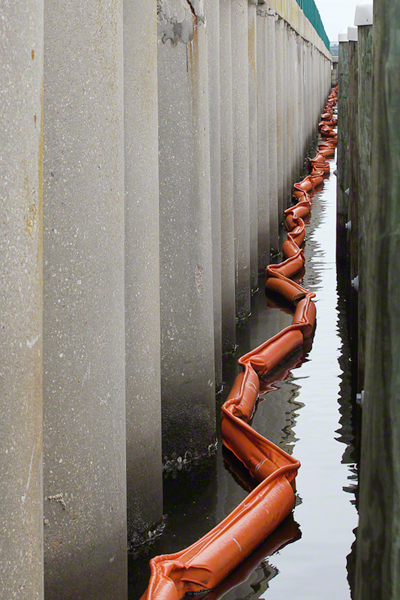 Boom inside Pass Christian Harbor. (Photo: Erika Blumenfeld © 2010) Boom inside Pass Christian Harbor. (Photo: Erika Blumenfeld © 2010)
Mississippi residents and fishermen Truthout spoke with believe Walker's move was from an order given by Gov. Haley Barbour, who has been heavily criticized over the years for his lobbying on behalf of the Tobacco and Oil industries.
Two days after Walker's announcement and in response to claims from state and federal officials that Gulf Coast waters are safe and clean, fishermen took their own samples from the waters off of Pass Christian in Mississippi.
The samples were taken in water that is now open for shrimping, as well as from waters directly over Mississippi's oyster bed, that will likely open in September for fishing. Commercial fisherman James "Catfish" Miller, took fishermen Danny Ross Jr. and Mark Stewart, along with scientist Dr. Ed Cake of Gulf Environmental Associates and others out and they found the fishing grounds to be contaminated with oil and dispersants. Their method was simple - they tied an absorbent rag to a weighted hook, dropped it overboard for a short duration of time, then pulled it up to find the results. The rags were covered in a brown, oily substance that the fishermen identified as a mix of BP's crude oil and toxic dispersants. Shortly thereafter, Catfish Miller took the samples to a community meeting in nearby D'Iberville to show fishermen and families. At the meeting, fishermen unanimously supported a petition calling for the firing of Dr. Walker, the head of Mississippi's DMR, who is responsible for opening the fishing grounds. Dr. Cake wrote of the experience: "When the vessel was stopped for sampling, small, 0.5- to 1.0-inch-diameter bubbles would periodically rise to the surface and shortly thereafter they would pop leaving a small oil sheen. According to the fishermen, several of BP's Vessels-of-Opportunity (Carolina Skiffs with tanks of dispersants [Corexit]) were hand spraying in Mississippi Sound off the Pass Christian Harbor in prior days/nights. It appears to this observer that the dispersants are still in the area and are continuing to react with oil in the waters off Pass Christian Harbor." Ongoing Contamination and the Carolina Skiffs On August 13, Truthout visited Pass Christian Harbor in Mississippi. Oil sheen was present, the vapors of which could be smelled, causing our eyes to burn. Many ropes that tied boats to the dock were oiled and much of the water covered with oil sheen. 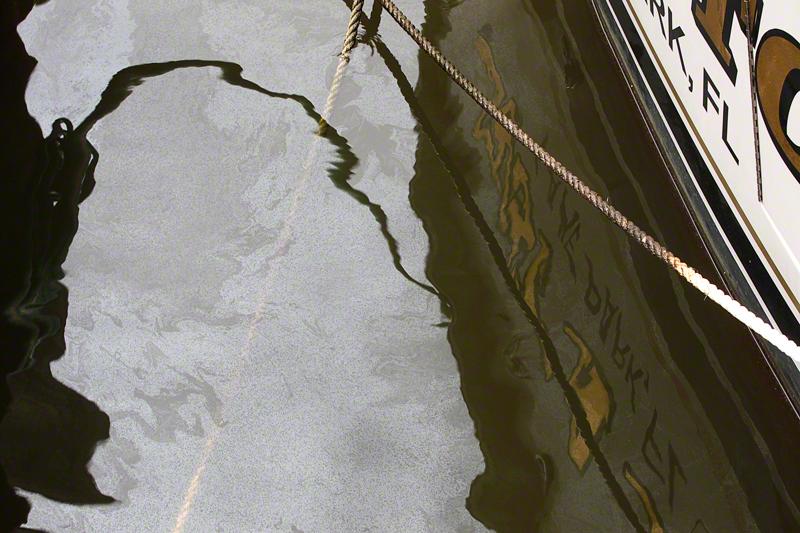 (Photo: Erika Blumenfeld © 2010) (Photo: Erika Blumenfeld © 2010)
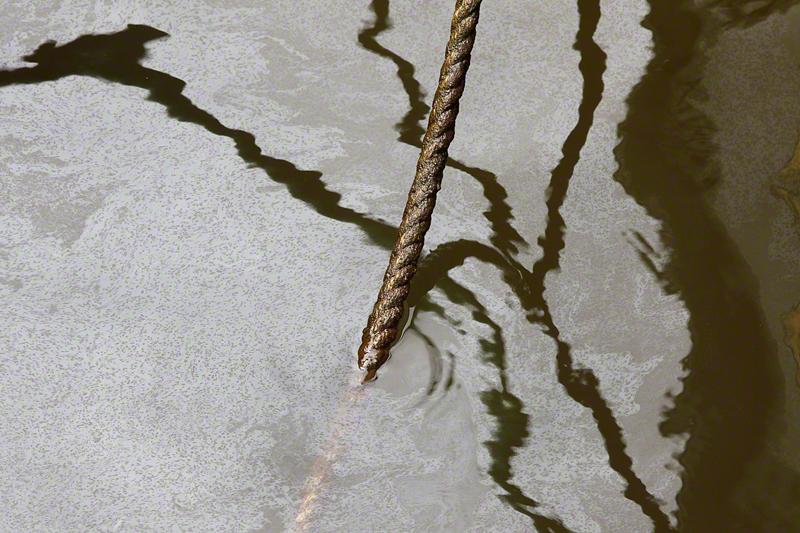 (Photo: Erika Blumenfeld © 2010) (Photo: Erika Blumenfeld © 2010)
A resident, who has a yacht in the harbor, spoke with Truthout on condition of anonymity due to fears of reprisal from BP. "Last week we were sitting on our boat and you could smell the chemicals," he explained. "It smelt like death. It was like mosquito spray, but ten times stronger. The next day I was hoarse and my lungs felt like I'd been in a smoky bar the night before." Oil boom was present throughout much of the harbor. Despite this, fishermen, obviously trusting Mr. Miller's announcement about the fishing waters being clear of oil and dispersant, were trying to catch fish from their boat inside the harbor. 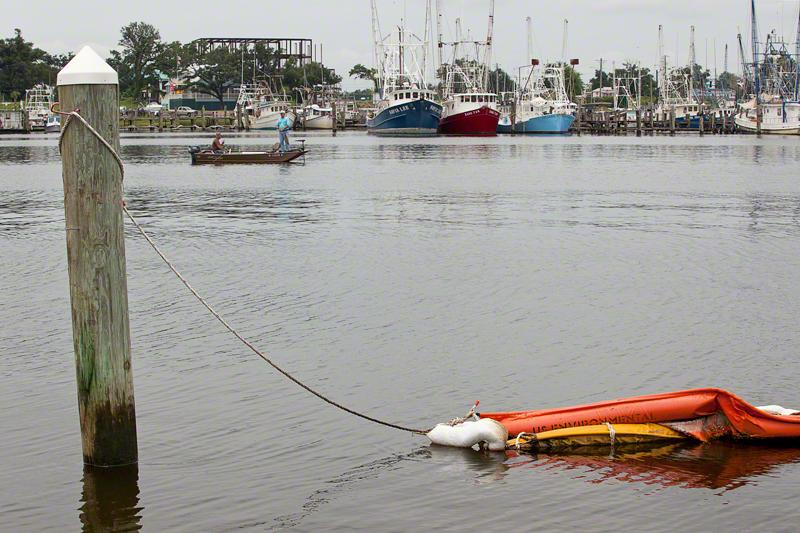 (Photo: Erika Blumenfeld © 2010) (Photo: Erika Blumenfeld © 2010)
"Last week oil filled this harbor," the man, an ex-commercial fisherman added. "BP has bought off all our government officials, and shut them up. You can't say the oil is gone, it's right here! Them saying it's not here is a bunch of bullshit." Truthout spoke with another man, who was recently laid off from the VOO program. He also spoke on condition of anonymity. "Just the other day one of the Carolina Skiffs passed us spraying something," he said. "We went west instead of east as we turned and a group of Carolina Skiffs was spraying something over the water." A Carolina Skiff is a type of boat, usually between 13' and 30' long, very versatile and can function well in shallow or deep waters. They are known for having a large payload capacity and a lot of interior space. Alarmed by what he saw, the former VOO worker called the Coast Guard to report what he believed was a private contractor company spraying dispersants. "We were later told by the Coast Guard they'd investigated the incident and told us what we saw were vacuum boats sucking oil, and they were rinsing their tanks," he said. "But we know this is a lie and that BP is using these out of state contractors to come in and spray the dispersant at night and they are using planes to drop it as well." He worked in the VOO program looking for oil. When his team would find oil, upon reporting it, they would consistently be sent away without explanation or the opportunity to clean it. "They made us abort these missions," he said. "Two days ago I put out boom in a bunch of oil for five minutes, they told me to abort the mission, so I pulled up boom soaked in oil. What the hell are we doing out there if they won't let us work to clean up the oil?" He told Truthout that as his and other VOO teams would be going out to work on the water in the morning, they would pass the out-of-state contractors in Carolina Skiffs coming in from what he believed to be a covert spraying of the oil with dispersant in order to sink it. He believes this was done to deliberately prevent the VOO teams from finding and collecting oil. By doing so, BP's liability would be lessened since the oil giant will be fined for the amount of oil collected. "BP brings in the Carolina Skiffs to spray the dispersant at night," he added, "And they are not accountable to the Coast Guard." James Miller, who had taken the group out into the Mississippi Sound that found the oil/dispersants on August 11, told Truthout that the Carolina Skiff teams spraying dispersants were "common" and that it "happened all the time." Miller, who was in the VOO, is an eyewitness to planes spraying dispersants, as well as the Carolina Skiff crews doing the same.
"We'd roll up on a patch of oil ½ mile wide by one mile long and they'd hold us off from cleaning it up," Miller, speaking with Truthout at his home in D'Iberville, Mississippi, said. "We'd leave and the Carolina Skiffs would pull up and start spraying dispersants on the oil. The guys doing the spraying would wear respirators and safety glasses. Their boats have 375 gallon white drums full of the stuff and they could spray it out 150 feet. The next day there'd be the white foam that's always there after they hit the oil with dispersants." Some nights VOO crews would sleep out near the work sites. "We'd sleep out there and some nights the planes would come in so close the noise would wake us from a dead sleep," Miller added. "Again, we'd call in the oiled areas during the day and at night the planes would come in and hit the hell out of it with dispersants. That was the drill. We'd spot it and report it. They'd call us off it and send guys out in the skiffs or planes to sink it." Mark Stewart, from Ocean Springs, Mississippi, was in the VOO program for 70 days before being laid off on August 2. The last weeks has seen BP decreasing the number of response workers from around 45,000 down to around 30,000. The number is decreasing by the day. Stewart, a third generation commercial fisherman, told Truthout he had regularly seen "purple looking jelly stuff, three feet thick, floating all over, as wide as a football field" and "tar balls as big as a car." He, like Miller, is an eyewitness to planes dispensing dispersant at night, as well as the Carolina Skiff crews spraying dispersant. "I worked out off the barrier islands of Mississippi," Stewart said. "They would relentlessly carpet bomb the oil we found with dispersants, day and night." Stewart, echoing what VOO employees across the Gulf Coast are saying, told Truthout his crew would regularly find oil, report it, be sent away, then either watch as planes or Carolina Skiffs would arrive to apply dispersants, or come back the next day to find the white foamy emulsified oil remnant that is left on the surface after oil has been hit with dispersants. Stewart added, "Whenever government people, state or federal, would be flying over us, we'd be instructed to put out all our boom and start skimming, acting like we were gathering oil, even when we weren't in the oil." While acting as whistleblowers, Miller and Stewart have both been accused of being "troublemakers" and "liars" by persons in the Mississippi government and some of their local media, in spite of the fact that they are doing so from deep concern for their fellow fisherman and the environment. Meanwhile, both men told Truthout they live with chronic headaches and other symptoms they've been experiencing since they were exposed to toxic dispersants while in the VOO program. Recent trips to investigate their waters for oil and dispersant have worsened their symptoms. 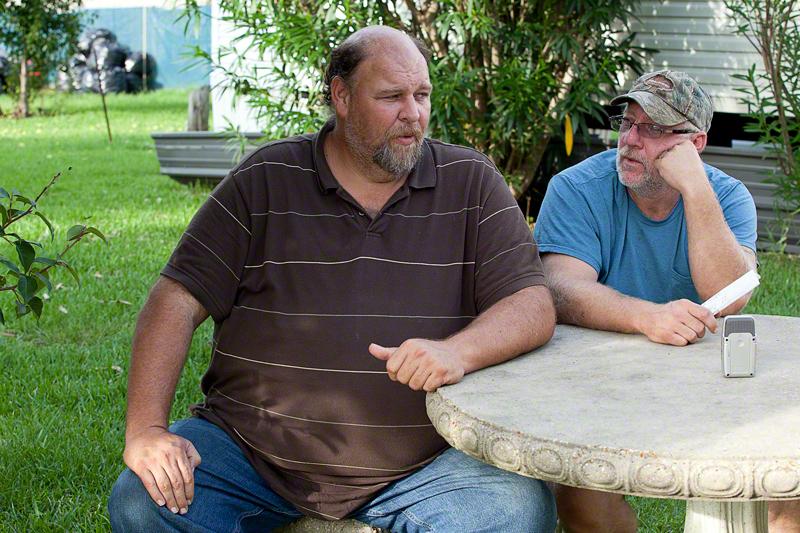 Mark Stewart with James Miller. (Photo: Erika Blumenfeld © 2010) Mark Stewart with James Miller. (Photo: Erika Blumenfeld © 2010)
"Why would we lie about oil and dispersant in our waters, when our livelihoods depend on our being able to fish here?" Miller asked. "I want this to be cleaned up so we can get back to how we used to live, but it doesn't make sense for us or anyone else to fish if our waters are toxified. I don't know why people are angry at us for speaking the truth. We're not the ones who put the oil in the water." Miller is bleak about his assessment of the situation. He pointed out toward the coast and said, "Everything is dead out there. The plankton is dead. We pulled up loads of dead plankton on our trip on Wednesday. There are very few birds. We saw only a few when there are usually thousands. We only saw two porpoises when there are usually countless. We saw nothing but death." Coast Guard Complicity "Lockheed Martin aircraft, including C-130s and P-3s, have been deployed to the Gulf region by the Air Force, Coast Guard and other government customers to perform a variety of tasks, such as monitoring, mapping and dispersant spraying," states a newsletter published in July by Lockheed Martin. An article by the 910th Airlift Wing Public Affairs Office, based in Youngstown, Ohio, states that C-130H Hercules aircraft started aerial spray operations Saturday, May 1, under the direction of the president of the United States and secretary of defense. "The objective of the aerial spray operation is to neutralize the oil spill with oil dispersing agents," it says. Joseph Yerkes, along with other Florida commercial fishermen and Florida residents, have seen C-130s spraying dispersants on oil floating off the coast of Florida numerous times. But the Coast Guard denies it. At a VOO meeting in Destin on August 3, Lt. Cmdr. Dale Vogelsang, a liaison officer with the United States Coast Guard said, "I can state, there is no dispersant being used in Florida waters." The room, filled mostly with commercial fishermen, who were current or former members in BP's VOO program, erupted in protest and disbelief. When Vogelsang was immediately challenged on his statement, he replied, "I'll investigate the C-130s." Two BP representatives, along with Vogelsang, found themselves confronted by a large group of angry fishermen for over an hour. At times, the meeting resembled a riot more than the question-and-answer session it was intended to be. Yerkes, who lives on Okaloosa Island, has been a commercial fisherman and boat captain most of his life. For the last 12 years, he has owned and operated a commercial live bait business. Employed by BP as a VOO operator for more than two months, Yerkes, along with many other local commercial fishermen in the VOO program in his area were laid off on July 20 because BP and the Coast Guard believed there was no more "recoverable oil" in their area of Florida. Yet residents, fishermen, swimmers, divers and surfers in Florida, Alabama, Mississippi and Louisiana have been reporting oil floating atop water, sitting on the bottom and floating in the water column, in oftentimes great amounts, for the last two weeks. There have been many reports of various kinds of aircraft, including C-130s, dispensing dispersants over oil. Yerkes provided Truthout with a letter he wrote to document his witnessing a C-130 spraying what he believes to be dispersant.
"I witnessed [from my home] a C130 military plane flying and obviously spraying" over the Gulf of Mexico on July 30, "flying from the north to the south, dropping to low levels of elevation then obviously spraying or releasing an unknown substance from the rear of the plane. This substance started leaving the plane when it was about ½ to 1 mile offshore, with a continuous stream following out of the plane until it was out of sight flying to the south." The substance, Yerkes wrote, "was not smoke, for the residue fell to the water, where smoke would have lingered." He added, "this plane was very low near the water and the flight was very similar to viewings I made over the past few weeks when dispersants were sprayed over the Gulf near our area." A member of the VOO program provided relevant information of a "strange incident" on condition of anonymity. He was observing wildlife offshore the same day Yerkes witnessed the C-130 when he received a call from his supervisor. He told his supervisor he and his crewmember were not feeling well, so he was instructed to return in order "to get checked out because a plane had been reported in our area spraying a substance on the water about 10-20 minutes before." The employee complained of having a terrible headache and nasal congestion while his crewmember said he had a metallic taste in his mouth. After filling out an incident report, both men were directed to go to the hospital. The following day the two men were "asked to go to the hospital for blood tests." One week after the aforementioned meeting, The Destin Log quoted Vogelsang as saying he had contacted Unified Command who "confirmed" that dispersants were not being used in Florida waters. Vogelsang added, "Dispersants are only being used over the wellhead in Louisiana," a statement that Truthout has heard refuted by dozens of commercial fishermen from Florida, Alabama, Mississippi and Louisiana. Yerkes told Truthout that he, too, was aware of the Carolina Skiffs coming in from out of state to dispense dispersants over the oil. In the recent VOO meeting in Destin, Vogelsang was asked about the out-of-state contractors being brought in to work in Florida waters. He replied, "The only vessels we are using in the program are local, vetted vessels." His response caused an uproar of protest from the crowd, with various fishermen and VOO workers yelling that Carolina Skiffs were being brought in from out of state. To this, Vogelsang responded, "Vessels that are from out of the area are contractors with special skills." Vogelsang went on to claim that the amount of "product" [oil] being found in Florida is decreasing daily. This, too, caused an uproar from the room full of fishermen. "I can take anybody in here out and show them oil, every single day," David White, a local fishing charter captain responded. "I was in the VOO program, driving around calling in oil, telling them where it is and nobody ever came. I never saw any skimmers there and I'm talking about some serious oil. I can show you tar balls going across the bottom like tumbleweeds." Yerkes provided Truthout with a written statement from Lawrence Byrd, a local boat captain who was a task force leader in the VOO program from June 4 to July 21. On July 27 and 28, Byrd took BP officials, Coast Guard officials and an EPA official on a fact finding mission in search of oil. "The Coast Guard told us if we could show them the oil, they'd put us back to work," Yerkes told Truthout, "So Byrd took him, and other officials out on his boat and showed them the oil." Byrd's statement contains many instances of the group encountering oil on the trips: "Within 30 minutes in the Rocky Bayou and Boggy Bayou we found 4 different football field sized areas of oily sheen on the water ... We moved east from there in search of weathered oil, just past Mid Bay bridge we found a 2 acre oil slick with a water bottle full of crude oil. At this time the Coast Guard Lt. had seen enough to warrant a 2nd trip with BP officials and EPA." The next day, July 28, Byrd wrote: "On board were BP officials, a Parson official, 2 Coast Guard Lts and EPA. First stop Crab Island Destin where we found tar balls, dead fish and plenty of dead sargasm grass. All officials seemed very concerned about all of our findings." The report goes on to list further oil findings and added, "In the eyes of BP officials, Coast Guard Lts. and EPA, this was more than enough oil product to warrant the need for more VOO boats to serve as a first line of defense against this toxic pollution. To this day Destin VOO is still operating with ½ task force in the bay and ½ task force in Gulf with Walton County being completely unprotected! I feel all parties have good intentions but nothing is being done!" "Somebody is stopping that process," Yerkes told Truthout. "[Retired Coast Guard Adm.] Thad Allen stood up at Tyndall Air Force Base the same night that they sprayed dispersant on the oil in front of Destin and he said we are going to use local fishermen in each local area to do the jobs, even beyond the cleaning of the oil. The day after he said that at Tyndall ... every one of the Carolina skiffs is loaded to the hilt with boom. Nobody else got reactivated." Yerkes expressed his frustration further. "They are lying about this whole thing and it's got me in an uproar," he said. "I'm by myself. I'm the only one willing to stand up. I have a lot of friends who want to stand up and speak out. They know the Coast Guard and BP are lying, but they won't talk because they are getting paychecks and don't want to jeopardize that. They are saying they are finding new oil all the time, but the Coast Guard claims they are testing it and saying it's safe. I know for a fact they are not testing it and we watched and heard C130s fly every night in July." There is a clear pattern that VOO workers in all four states are consistently reporting:
- VOO workers identify the oil.
- They are then sent elsewhere by someone higher up the chain of command.
- Dispersants are later applied by out-of-state contractors in Carolina Skiffs (usually at night), or aircraft are used, in order to sink the oil.
- The oil "appears" gone and, therefore, no additional action is taken.
"There are surfers coming in with oil on them," Yerkes continued, "There are divers telling us it's on the bottom. We have VOO workers coming in after finding oil three inches thick atop the water as of last week and they go back out there and it's gone." "There are stories of people getting notes on their cars, verbal and phone threats. I don't want to become one of those people. I'm trying to heighten my profile so they don't want to mess with me," Yerkes added. "I want the truth to come out so the public knows. I'm trying to make BP and the government come out and tell the facts instead of lying to the public about what is going on. I want to know how much dispersants they are using, where all the oil is and the effects these are having on all of us. Somebody is lying and we want the truth." | 
 Before the British Army deployed to Helmand in southern Afghanistan in the summer of 2006, it was confidently asserted by military intelligence that there were "no more than a thousand" Taliban insurgents in the entire province. The assumption was that they would be no match for the 3,300-strong task force originally sent to challenge them.
Before the British Army deployed to Helmand in southern Afghanistan in the summer of 2006, it was confidently asserted by military intelligence that there were "no more than a thousand" Taliban insurgents in the entire province. The assumption was that they would be no match for the 3,300-strong task force originally sent to challenge them. Taliban fighters featured in a film by journalist Paul Refsdal.
Taliban fighters featured in a film by journalist Paul Refsdal. 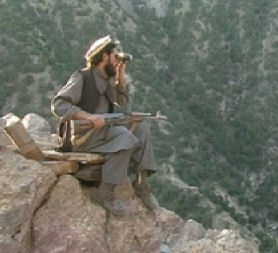 "We are against war," as a Taliban commander once explained to me. "It creates nothing but widows and destruction. But jihad is different. It is our moral obligation to resist you foreigners. One year, a hundred years, a million years, ten million years – it is not important. We will never stop fighting. At Judgement Day, Allah will not ask, "What did you do for your country?" He will ask, "Did you fight for your religion?""
"We are against war," as a Taliban commander once explained to me. "It creates nothing but widows and destruction. But jihad is different. It is our moral obligation to resist you foreigners. One year, a hundred years, a million years, ten million years – it is not important. We will never stop fighting. At Judgement Day, Allah will not ask, "What did you do for your country?" He will ask, "Did you fight for your religion?""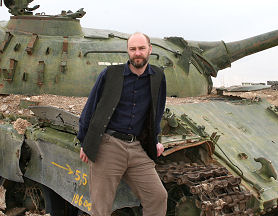 Perhaps half a million mujahideen died in the war against the Soviets, along with about a million civilians: numbers that the modern Taliban insurgency has hardly begun to match. The Red Army, for its part, suffered more than 14,000 killed and nearly 54,000 wounded. Given their history, the Taliban seem highly unlikely to stop fighting until their demands are at least partly met.
Perhaps half a million mujahideen died in the war against the Soviets, along with about a million civilians: numbers that the modern Taliban insurgency has hardly begun to match. The Red Army, for its part, suffered more than 14,000 killed and nearly 54,000 wounded. Given their history, the Taliban seem highly unlikely to stop fighting until their demands are at least partly met.






